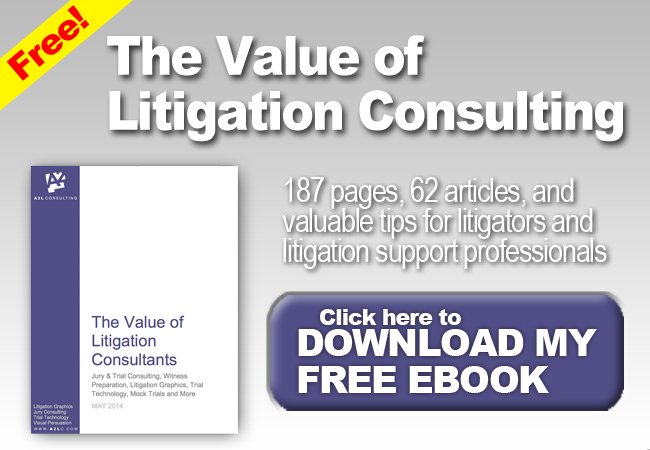by Ryan H. Flax, Esq.
(Former) Managing Director, Litigation Consulting
A2L Consulting
How early in the litigation process should you think about how a jury will react to your case, your client, or you? When should you begin to develop your case themes and storylines? Which is more important to your chances of winning a trial – having a compelling story to tell, or bringing in solid evidence under the law? Here’s an easy one: When you get to the appeal, would you rather be writing the red or blue brief (hint: it’s the red one for respondents)?
What I encourage in this article will seem elementary to the best litigators, but I’m writing from experience when I say that many trial attorneys fail to properly develop the necessary two-track strategy for their case – and lose because of it.
The Two-Track Strategy
What begins at the early stages of case preparation as a single track, which includes general case building, wrapping one’s mind around the full scope of the relevant law, filling in the useful facts where they are needed and identifying the harmful facts, must quickly change to a two-track strategy directed towards both a jury presentation and a solid evidentiary record. (Although this article is focused on courtroom persuasion in jury trials, it also applies well to a bench trial to a judge, an arbitration to a panel, or a mediation before a mediator, which are all forums with an audience of human beings.)
These two tracks clearly do not occupy the same route, but both are essential to winning.
The “Law Track”
Most attorneys, especially those closer to their law school graduation than to retirement, are more familiar with one of these two tracks than the other -- the creation of a solid evidentiary record that is focused on a winning defense on appeal. We’ll call this track the “law track.” That’s because it’s the track that is most heavily burdened with law and facts, which is what we are taught in law school: we were tasked daily with reading and briefing cases and statutes and being prepared to recite legal requirements when called upon by our professors.
Most attorneys approach their cases in this same way – by identifying what the court of last resort has to say about the relevant law, i.e., what must be proved for them to win in the eyes of the court, ordinarily by fulfilling all the “prongs” of the case law. Then these attorneys slowly build up their “garden of weeds” around the case, based on these issues.
These same attorneys focus on every fact they can soak up to decide where it fits into their legal position, they build preemptive defenses relating to any “bad” facts, and they search for hidden facts to support alternative theories of their case. This is very important because it’s the foundation of any case. But it’s not the only or even most important part of building a case for trial. Moreover, as the “garden of weeds” grows and grows as discovery develops, it’s often very difficult for even the sharpest attorneys to extricate themselves from the weeds and see the bigger picture of the case they’re about to try.
So, in addition to the “law track,” what else should a trial lawyer consider?
The Persuasion Track
The other of the two tracks, and the one that many litigators tend to overlook, is building a case to satisfy a jury (or judge in the event of a bench trial) in a “real life,” non-legal sense. I call this the “persuasion track.”
After all, trying a case in court is something like making an extended elevator pitch for your client, and you need to make sure that the jury wants to hear it and that the jurors will be affected by your pitch in the way you intend.
Often, a litigator will spend too little time, or none at all, on this courtroom persuasion track. Most litigation teams tend to wait until the last minute before trial (often in the war room outside the courthouse) to really put their story together in a way that will be persuasive to jurors.
I have found that during trials (and mock trials), juries tend to find relatively few facts very interesting and “important” and that they then base the entirety of their decisions in the jury room on those few facts. There is a well-known psychological phenomenon called confirmation bias, which is the tendency to interpret new evidence as confirmation of one’s existing beliefs or theories. After observing many mock trial exercises and seeing the results of dozens of jury trials, I have concluded that most juries tend to decide the outcome of a case in the first few minutes of opening statements and then use facts that fit their version of the case as reasoning in deliberations (the strongest or loudest or pushiest jurors typically triumphing in these deliberations). Attorneys need to recognize this and to develop their trial story around the key facts onto which jurors will tend to latch.
If you don’t win at trial, you’ve got the short end of the stick when you head to post-trial arguments/motions and appeal. You must carefully develop your case along the persuasion track to plan to be successful on the second, law track. The question now is, how is this done? That will be the subject of my next article.
*This article updates a 2012 article and lays the groundwork for a more detailed explanation of the two-track strategy in subsequent articles.






Leave a Comment